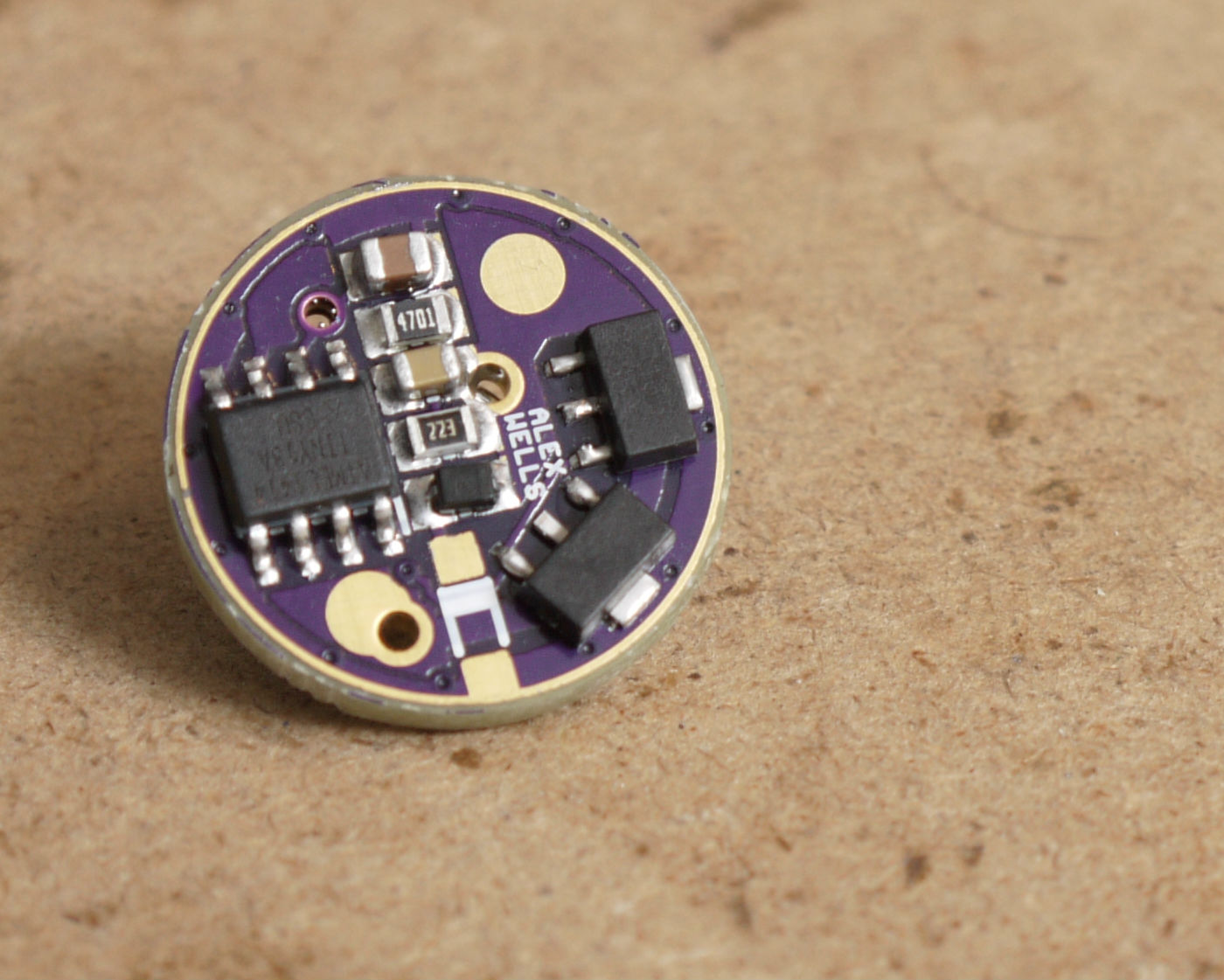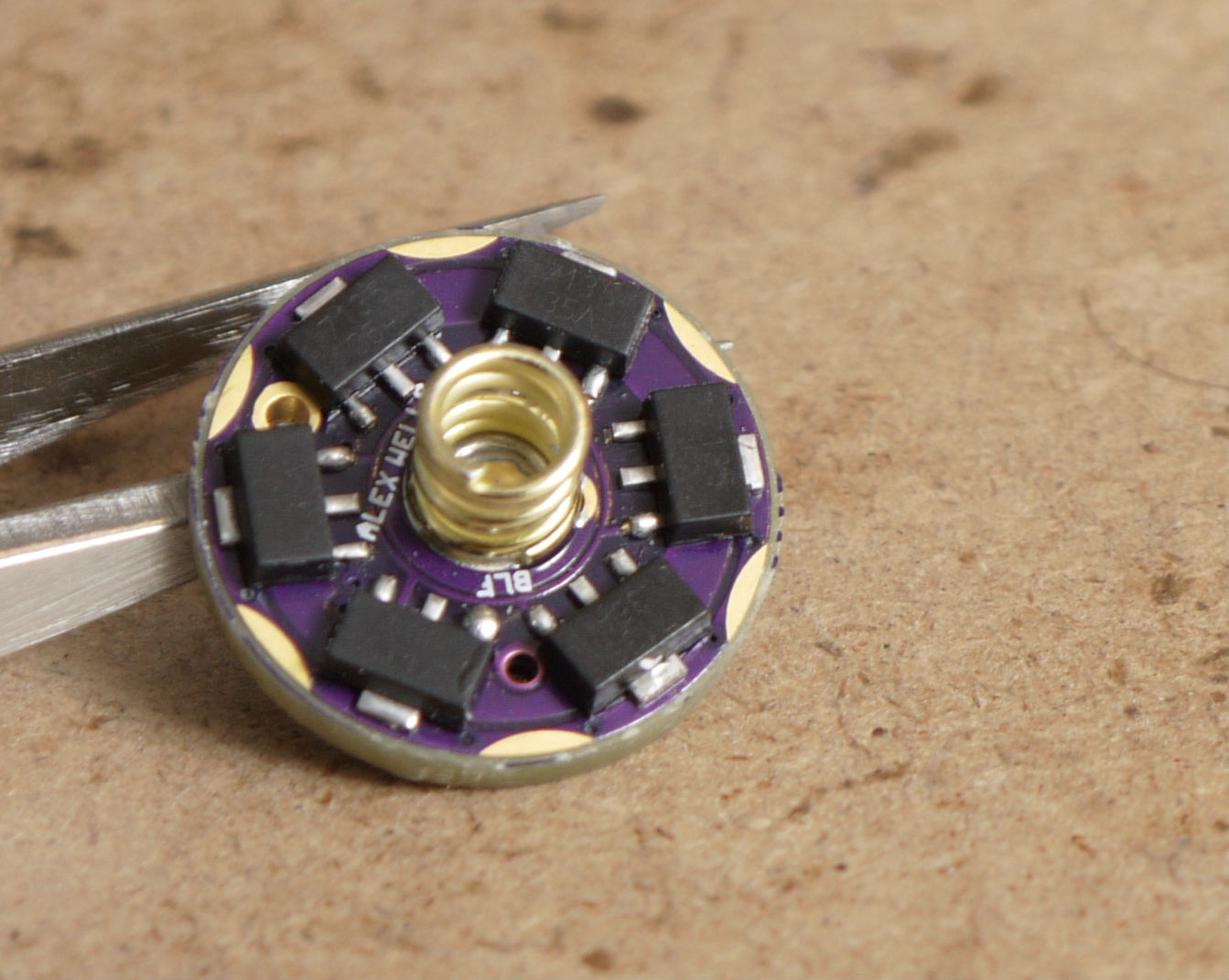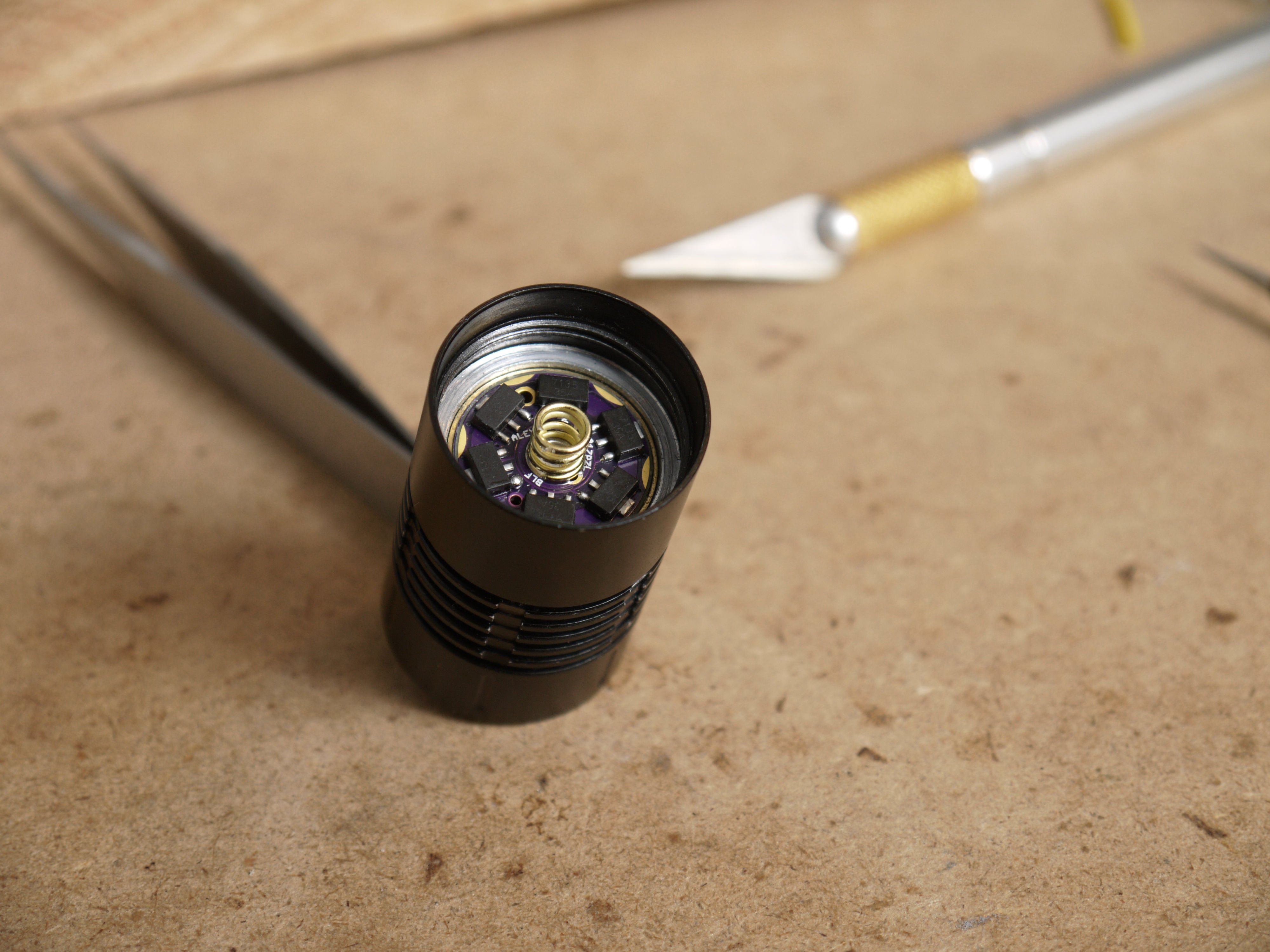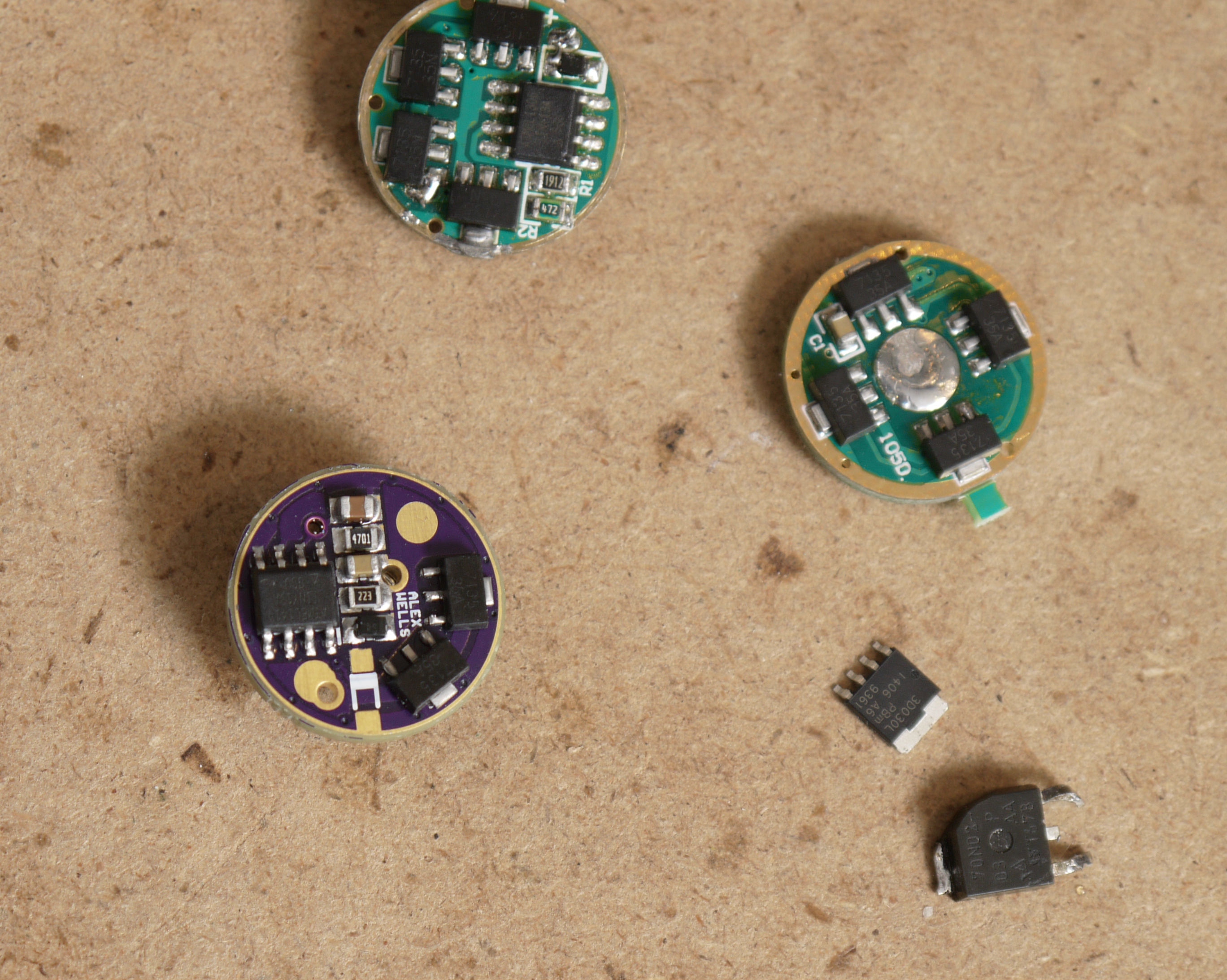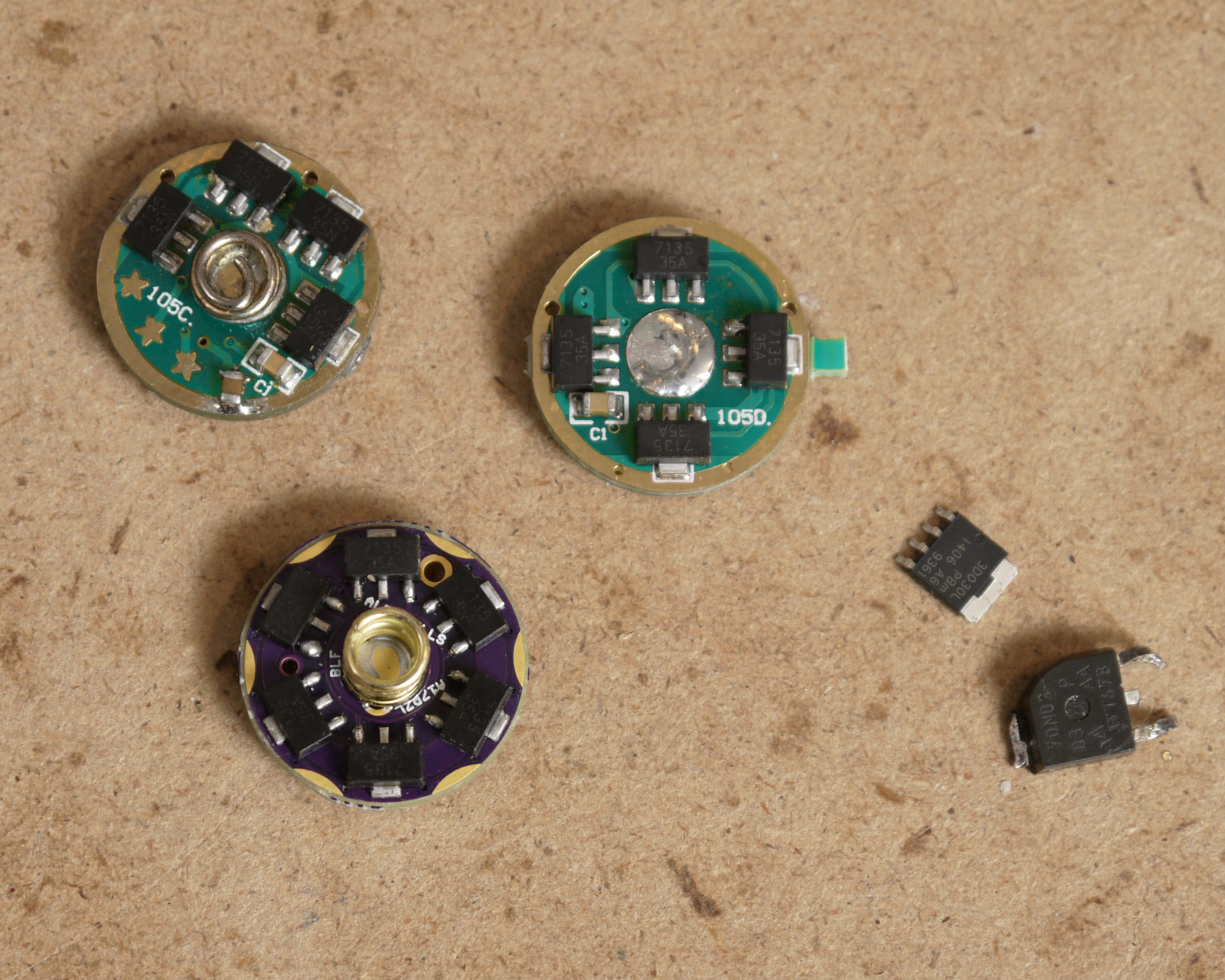Other than aesthetics, are there any practical differences between this and RMM’s moonlight special?
Assuming you start with an assembled driver and use it as intended? No.
For the purposes of building one or using special features, several things jump out:
- My driver should be much easier to assemble. Looking at the images will show you why, but mostly it’s because component spacing is more generous and all solder pads are much larger. (Including those for the LED wires.)
- RMM’s driver uses the traditional and potentially more ‘correct’ location for C1. On current FET drivers we’ve abandoned this placement of C1. For the most part this isn’t relevant and makes no difference one way or another. The one scenario where it matters is that RMM’s Moonlight Special v2 is almost certainly unable to control a piggybacked FET on an extra output (PB4) for a ‘big turbo’.
- My driver provides a decently large pad (larger than where you solder LED- on a Nanjg-105c) for PB4. This can be either an input or an output. Take a look at some of the discussion in the STAR firmware thread for more info, but the idea of using an input for temperature throttling is being worked on a little.
- The current revision of RMM’s driver still uses Mattaus’s skinny GND ring - easier to damage.
- The current revision of RMM’s driver is likely to pull 7135’s outwards during reflow. That’s why I added the scalloped GND ring on mine. You’ll note that there is always a solder dam to help hold my 7135’s in place.
- I think I’ve got bigger traces, but it just doesn’t matter.
- RMM’s driver exposes “Star 3” and “Star 4” on the bottom for use either as an offtime cap location or setting up modes or with a momentary switch. My driver does not expose Star 3 on the bottom but does expose Star 4 with a covered via which you can scrape. Normally Star 4 is used for offtime on the top. The via is large enough to pass a stripped wire through without scraping in case that’s what you want to do: you just solder the wire onto the OTC pad on top. Really mine is setup specifically to optimize it’s options for use without stars while RMM’s is setup to make the best potential use of stars.
- RMM’s driver has traces for both PWM signals available on top. Mine does not. With that in mind, RMM’s driver would be better for driving a secondary LED with PWM after cutting traces and doing some scraping.
Mostly piddly stuff in the end.
Your first bullet point was enough for me!
RMM offers a build service, Wight does NOT. ![]() (Do you?)
(Do you?)
RMM’s drivers are designed for RMM to use in his own builds, he’s not trying to make it easy for the masses only making it do what he wants it to. This is the critical difference and of course for us on the end both drivers work exceedingly well. Those large pads are indeed appreciated by those of us that drink too much coffee and are too lazy to take the large stock tip off the soldering iron. ![]()
Both of you guys are over the top and greatly appreciated. ![]()
In regards to the tip, I tried using a needle tip for 7135 stacks, and it wouldn’t hold the heat, so I’m back to a medium chisel now. I guess I’m in good company.
You’re right DBCstm, that’s certainly one major difference! I encourage everyone to build their own. ![]() :-p
:-p ![]()
![]() The only drivers I currently offer to build are the drivers in my Lux-Pro kit.
The only drivers I currently offer to build are the drivers in my Lux-Pro kit.
To underscore that point: These 3 pictures show my A17PZL driver (which uses full size 0805 footprints) on the right and a different driver which employs 0603 footprints on the left. As you can see I’ve got a pair of 0805 sized components for each driver and I proceed to lay them onto the pads. 0603 pads are usable for 0805 (and there is a specification for using that sized pads for 0805, it’s not just some hack). The difference is that hand soldering, inspection, and rework are all more difficult with the smaller pads. Click for big versions.
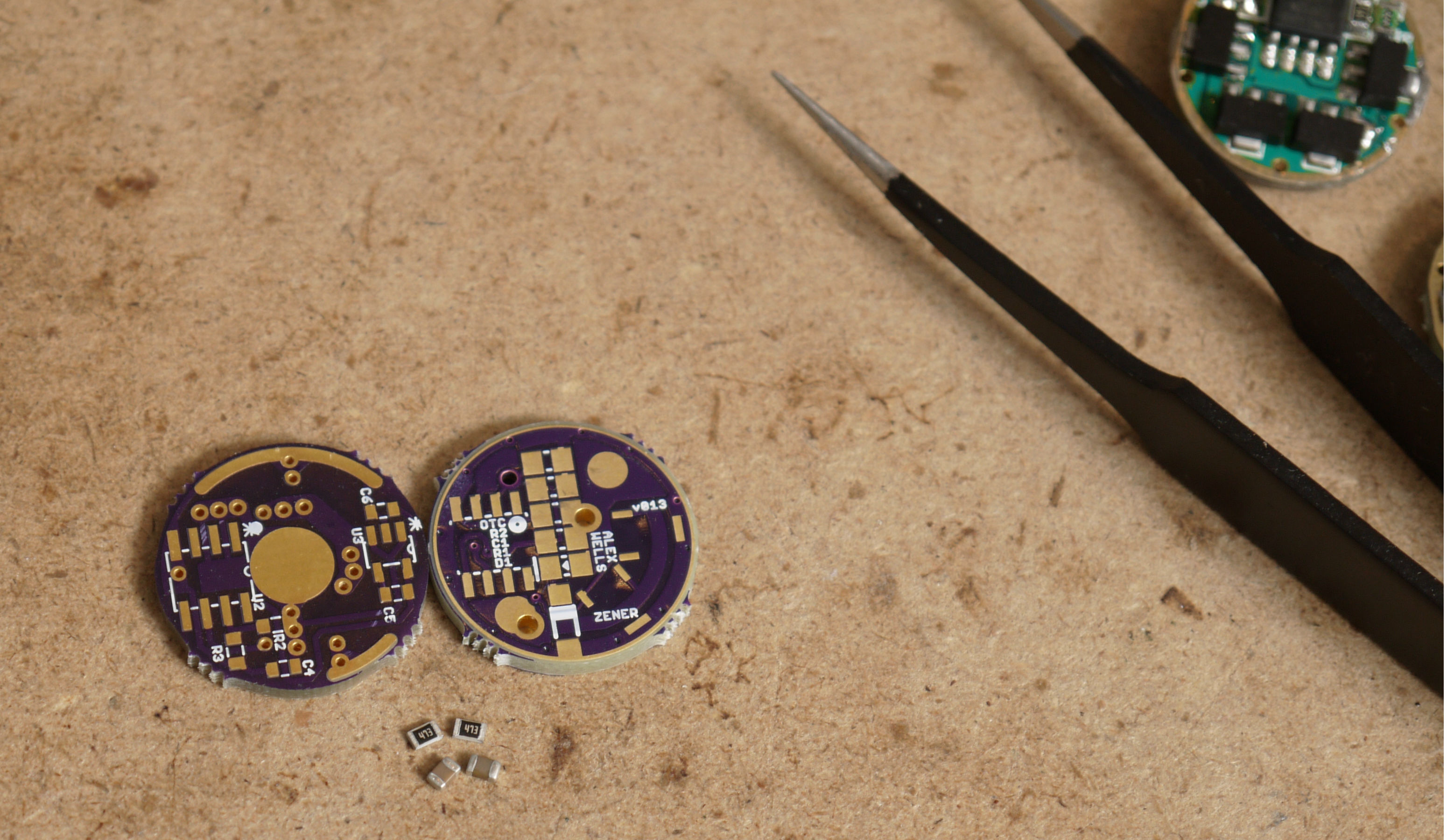
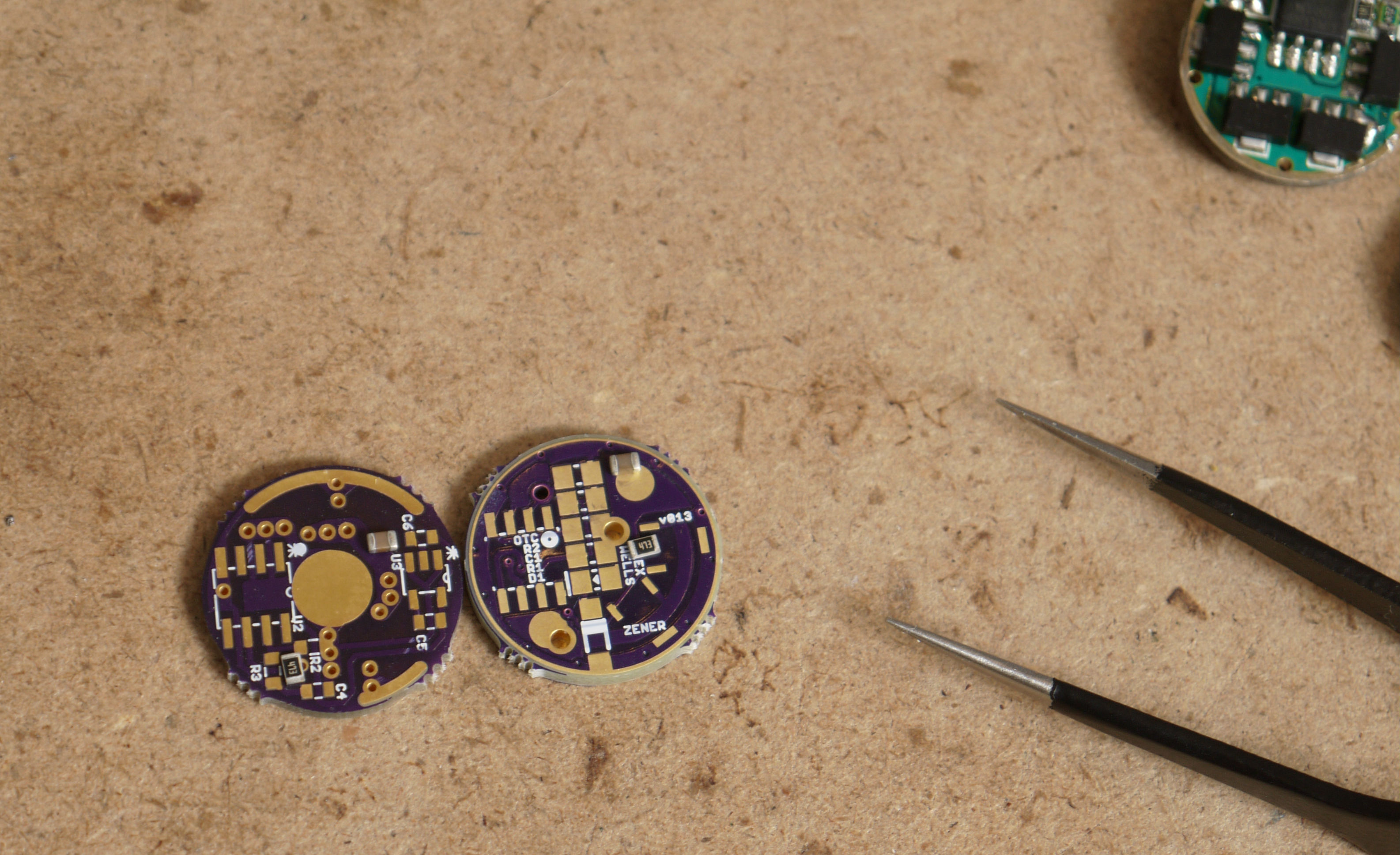
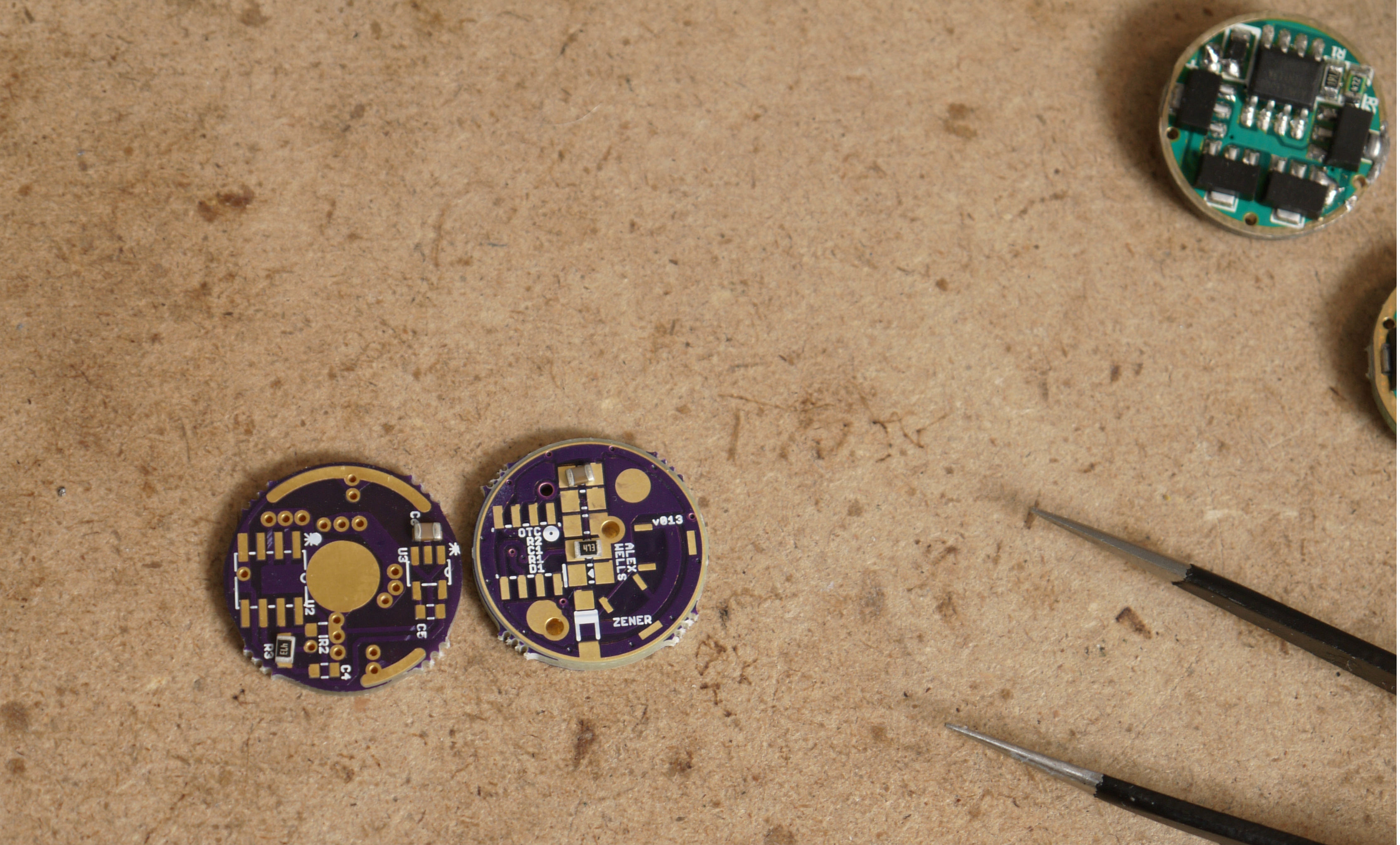
AW for the win!
I like that PZL driver, works great and looks really cool installed.
I do believe that’s the first time I’ve ever put 7135’s on a board that didn’t have 7135’s under em! lol (to make myself feel at home, I did that as well. ![]() )
)
Thanks DBCstm!
I felt like I was leaving something out and sure enough I was. I forgot to mention that these were actually pics of the second A17PZL I’ve seen assembled. DBCstm got started a bit earlier than I did! ![]()
These look so awesome. I got my boards from Oshpark about a week ago… hoping to assemble a few in the next couple of days. Can’t wait to try them out… and also to get my feet wet on messing with firmware.
One question… any issue with using 1912 resistors (like from a standard 105C or qlite)? Noticed you used some with slightly higher value above. I’m far from an EE so I have very little understanding of what the resistors even do for the MCU. Is the difference something I need to account for with the voltage monitoring parameters in the firmware?
Thanks grantman321. The 19.1k resistor can work fine with tweaked parameters, it’s not a problem. 22k is cheap and easy (it functions at least passably with the stock values). Take a look at the comment section at the top of STAR_off_time.c to see a description of how those resistors are used and a summary of the math. Understand that we’ve moved the input for the voltage divider from the back of the diode to BAT+, so the “~.25 v drop from the protection diode” which JonnyC mentions is now gone. I just use a voltage divider calculator (this one).
I go on a bit more on the subject over here, and probably some other places too: Oshpark Projects (#917)
Just a question what if my mode is 10mA, 350mA, and 2.8A, can i use the mode 10mA and 350ma on that single 7135?
Not with an unmodified STAR_off_time firmware.
As I see it, you’re already running dual PWM by utilizing the single chip for moon. To select a second mode to also use that chip would maybe take a 3rd PWM channel? And available pins on the MCU are scarce? Or is it for a totally different reason?
Totally different reason. It’s all just software limitations. JonnyC’s method of controlling the two PWM signals together is fairly straightforward, easy to implement, and easy to understand.
The method used in STAR_off_time and STAR_on_time is simply to draw a line in the sand, say for example at 40/255.
|
Firmware mode level: |
Primary PWM out: |
Alt PWM out: |
|
255 |
255 |
255 |
|
200 |
200 |
200 |
|
100 |
100 |
100 |
|
45 |
45 |
45 |
|
35 |
0 |
35 |
|
9 |
0 |
9 |
We only maintain one “PWM/mode level” variable (0-255), but we have two outputs. Various features like stepdown & rampdown manipulate that variable directly. Workarounds can be implemented to get 255/255 out of our ALT PWM output and 0/255 out of our primary PWM output at the same time, but they’d potentially behave badly during stepdown and things. A full rewrite is a lot of work and doesn’t seem to get us a lot.
ok stupid question: which pad is LED- and which is + ?
Positive is the pad close to the LVP components on the other side or you can use the via that touches R1 and C1 that’s almost in the center of the board.
Just built one an hour ago. ![]()
so the large pad with the via is positive?
I can’t get it to work. The only thing I can think of is that my diode doesn’t have a line on it, so I’m not sure which way to orient it, however I’ve already tried it both directions. Is it possible I bought the wrong diodes?


You have both LED leads hooked up to positive.
